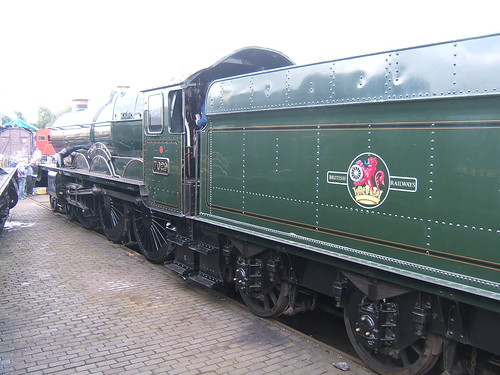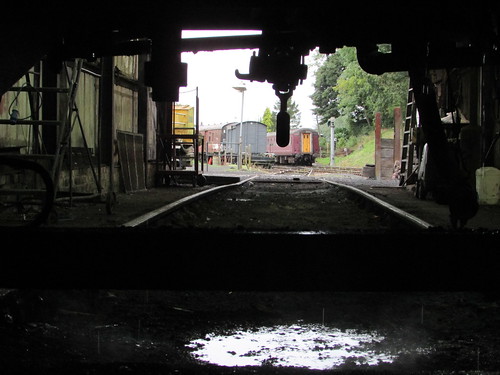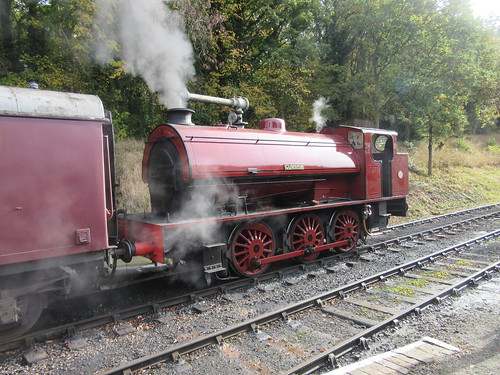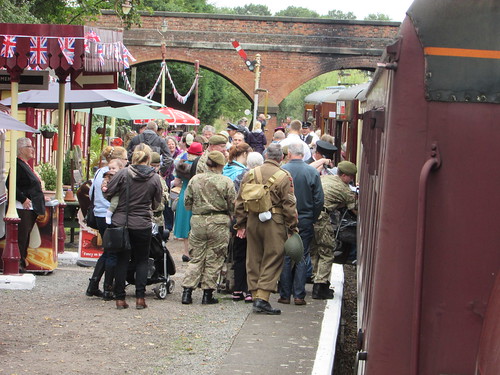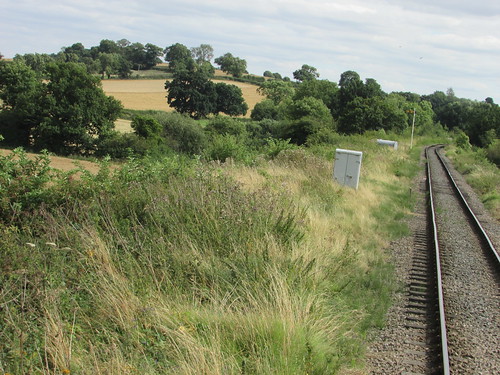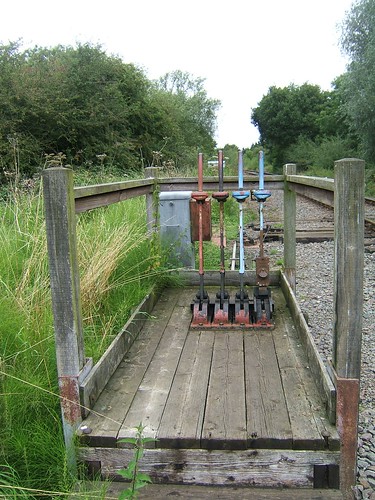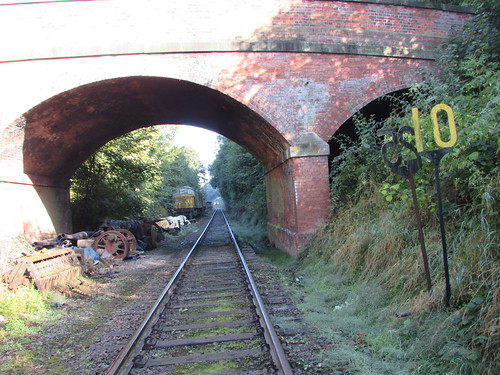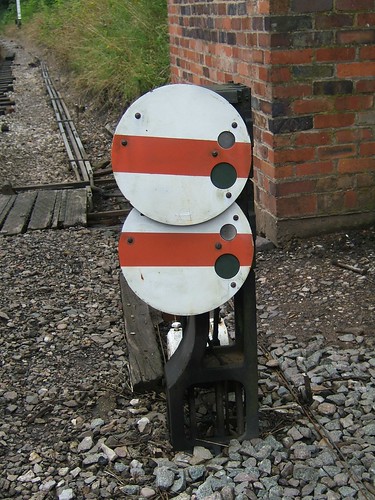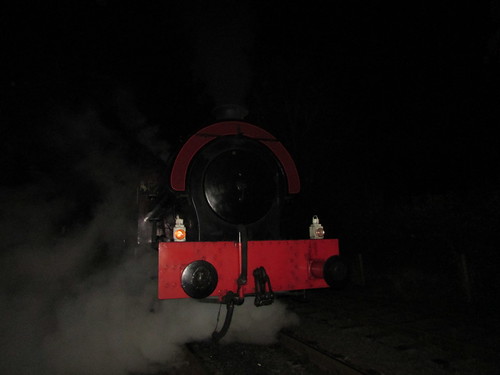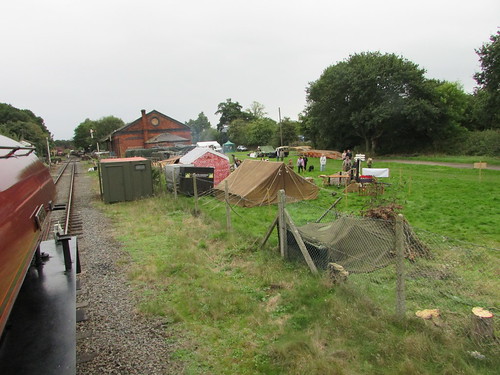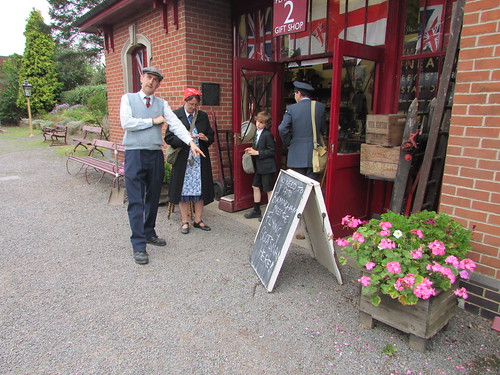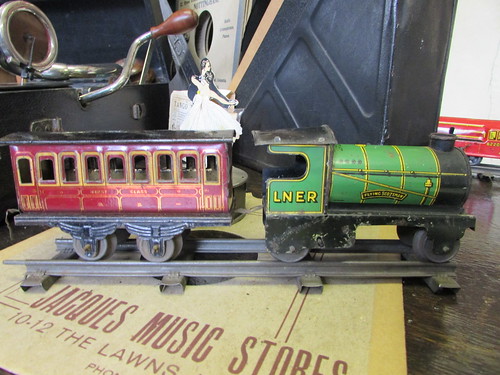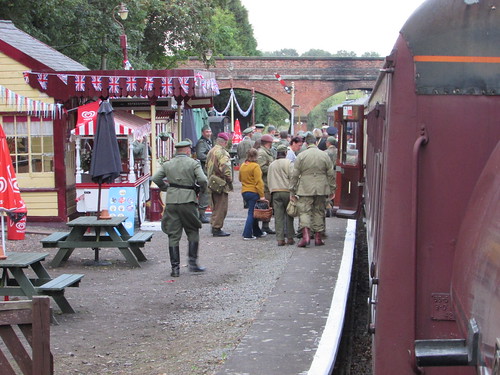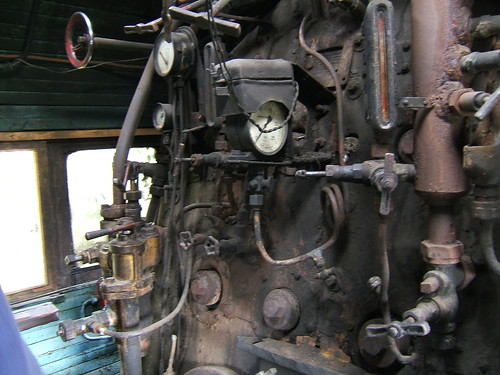Upon Nationalisation in 1948, the Southern Region of British Railways absorbed the assets of the Southern Railway.
There's a brief history of the London and South Western Railway here.
Brief early history of the South Eastern and Chatham Railway
Originally called the South Eastern Railway, parliamentary approval for a line from London to Dover was obtained in 1836, based on sharing the lines of other companies near London. The London & Greenwich Railway opened throughout in 1838 with its London terminus at Tooley Street (now London Bridge). The following year, the London & Croydon Railway opened from West Croydon to a junction with the London & Greenwich Railway, sharing the Tooley Street terminus. In turn, the London & Brighton Railway opened throughout in 1841 from Brighton to a junction with the London and Croydon Railway, then sharing their lines to Tooley Street.
The South Eastern Railway was to share the lines of the London & Greenwich Railway, the London and Croydon Railway and the London & Brighton Railway as far as Purley. In addition, the London & Brighton Railway was then to build, at cost, the line on behalf of the South Eastern Railway from its junction with the London & Brighton Railway near Purley to Redhill. This line stayed quite close to the London and Brighton line and crossed under it to reach Redhill. Subsequently, the South Eastern Railway re-imbursed the London & Brighton Railway for the construction costs.
After this rather tedious route out of London, William Cubitt then provided the South Eastern Railway with an almost dead straight main line from Redhill to Folkestone and Dover, with major intermediate stations provided with through lines for fast trains and platform loops for stopping trains. Construction started in 1838 and the line to Dover was completed in 1844.

1905 Railway Clearing House Map showing S.E.C.R. line (coloured pink) in between Purley and Redhill.
Click on the map for a larger view.
The railway was not well-liked and constantly feuded with neighbouring railways. Dissatisfaction with the services provided by the South Eastern Railway in North Kent led to the bill for the East Kent Railway being introduced into parliament in 1853. This line would provide much shorter journeys to the coast and, for the first time, bring important towns like Chatham and Rochester onto the railway system. In 1859, the East Kent Railway was renamed the London Chatham and Dover Railway (LCDR). Although funding was a perpetual problem, the railway managed to provide a service to Blackfriars and link up with the Metropolitan Railway (on the north bank of the Thames) before collapsing into bankruptcy. The LCDR somehow managed to carry on.
In a joint venture with the London Brighton & South Coast Railway, the Great Western Railway and London & North Western Railway called the 'Victoria Station and Pimlico Railway' (VS&PR) the London Chatham and Dover Railway participated in the construction of a new bridge over the Thames leading to a new terminus called Victoria, first opened in 1860 as a joint station. The station was very successful so, by 1862, the bridge over the Thames carried more tracks and a second, separate terminus had been built to the east, purely for the LCDR, after which the LBSCR solely used the western station. The two stations at Victoria were well-situated on the north bank of the Thames for West End passengers, although departing trains were immediately faced with a climb leading to Grosvenor Bridge over the River Thames.
The London Chatham and Dover continued to face financial difficulties and finally, in 1899, came to an agreement with its erstwhile enemy the South Eastern Railway. Under this agreement, the railways would operate jointly, trading as the 'South Eastern and Chatham Railway' (SECR). However, the two railways remained legally distinct (until 1923 when both, and the VS&PR, were absorbed into the Southern Railway by the Grouping).
The 1899 changes didn't stop the feuding between the former South Eastern Railway and the London Brighton and South Coast Railway, even after the railways occupied two termini side-by-side at Victoria. The eastern station now served the South Eastern and Chatham Railway and was called 'The Chatham' whilst the western station served the London Brighton and South Coast Railway and was thus called 'The Brighton'. Even when the both side-by-side stations were rebuilt (the Chatham in 1906, the Brighton in 1908) it was in notably contrasting styles.
 The 'Chatham' platforms at Victoria remain light and airy, thanks to the simple, arched roof. Unfortunately, all the clutter at platform level largely destroys the sense of space.
The 'Chatham' platforms at Victoria remain light and airy, thanks to the simple, arched roof. Unfortunately, all the clutter at platform level largely destroys the sense of space.
 Click for larger image.
Click for larger image.Details of the junctions between the S.E.C.R. (coloured pink) and other railways in the vicinity of Clapham Junction. Victoria Station is just off the map, top right. This map (and the one above) are from a series prepared by the Railway Clearing House in 1914 which appear in the reprint 'Pre-Grouping Railway Junction Diagrams 1914', published by Ian Allen (ISBN 0 7110 1256 3).
Book References
[1] 'The South Eastern and Chatham Railway' by O. S. Nock, 1971 edition Ian Allen (SBN 7110 0268 1).
[2] 'The Locomotives of the South Eastern Railway' by D. L. Bradley, 1963 The Railway Correspondence and Travel Society.
[3] ‘A Regional History of the Railways of Great Britain: Volume 2 Southern England’ by H. P. White, 4th edition published by David & Charles (ISBN: 0-7153-8365-5).
[4] 'History of the Southern Railway' by C. F. Dendy Marshall, revised by R. W. Kidner reprinted 1982 by Ian Allen (ISBN 0 7110 0059 X).
[5] 'Great Locomotives of the Southern Railway' by O. S. Nock, Guild Publishing, 1987 edition by Book Club Associates.
[6] 'Southern Steam' by O. S. Nock, published by David & Charles (ISBN 0 7153 5235 0).
[7] 'London's Termini' by Alan A. Jackson, published by David & Charles (0 330 02746 6).
Maps
Details of what remains of the S.E.C.R. today are shown in the 'Quail Track Diagrams':-
'Railway Track Diagrams Book 5: Southern and TfL' Third Edition, published by TRACKmaps (ISBN 978-0-9549866-4-3).
Related articles on other web sites
South Eastern Railway (Wikipedia).
London, Chatham and Dover Railway (Wikipedia).
South Eastern and Chatham Railway (Wikipedia).
Related articles on this web site
Origins of the Southern Railway: Part 1 - L.S.W.R..
Origins of the Southern Railway: Part 2: L.B.S.C.R..
Victoria Station, London.
My Pictures
Various albums which include pictures taken in recent times showing former S.E.C.R. infrastructure:-
London: former 'Southern' lines.
London's Railways.
London: Victoria Station.



